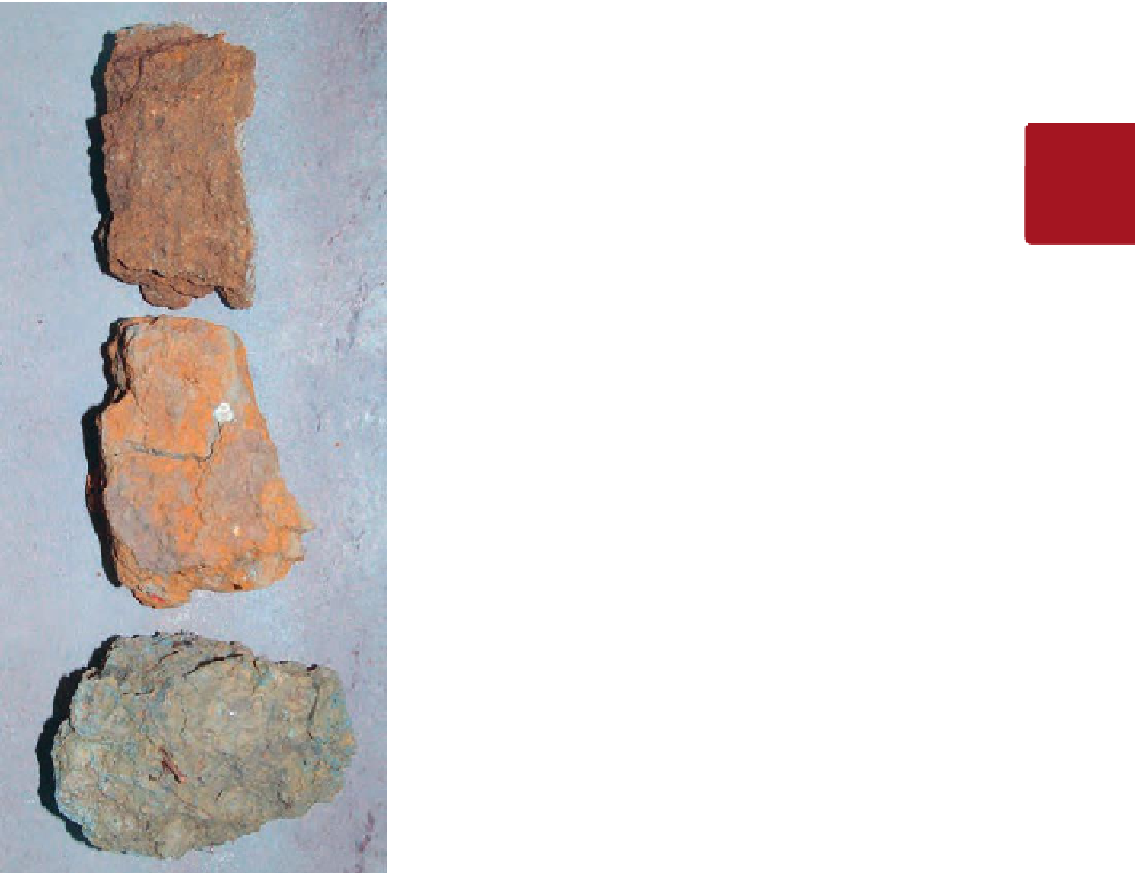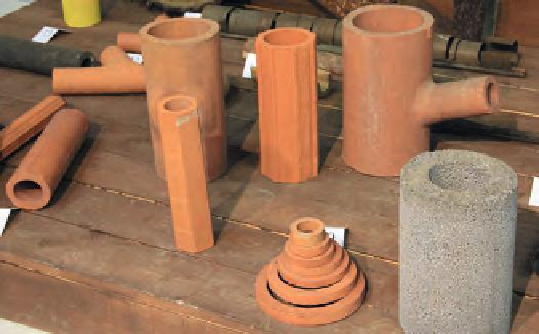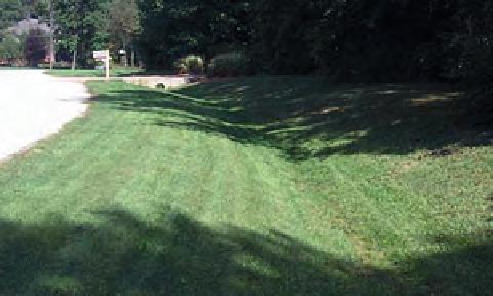Agriculture Reference
In-Depth Information
12
Figure 12.14
Drainage pipes. A range of 'clays'
(earthenware pipes) is shown. Most commonly they
are 30 cm long and either 75 mm or 100 mm diameter;
these are butted up close to each other to form straight
lines to intercept and carry away 'excess' water
Figure 12.15
Swales
Figure 12.13
Poorly drained soils. Soils that have
developed in aerobic conditions have bright orange,
yellow or brown colours (top), whereas those
developed in waterlogged conditions have grey, green
or blue tones (bottom). Fluctuating waterlogged and
aerobic conditions as the water table rises and fall
leads to mottled soil (middle sample)
(transpiration). The rate of drying depends on the
drying capacity of the air; increased water loss will
be depend on the same factors that make up a 'good
drying day' for clothes on the washing line or good
haymaking weather, that is, sun (or air temperature)
and wind.
If it is a good drying day, a wet bare soil surface gives
up water very quickly. This water is slowly replaced
from below and evaporation from the surface
continues. The replacement water has to come from
deeper in the soil and gradually the surface layers
begin to dry out and give up water much more slowly.
There comes a point when virtually no water can
reach the surface. This happens for most soils when
a layer of about 10 cm becomes dried out. This is
sometimes referred to as a 'dry mulch'; so long as
moist soil from below is not brought to the surface,
further water loss does not occur except though
roots. Once there are plants growing in the soil,
water can be taken from below the surface. Although
On a larger scale, French drains can be used to
intercept water coming off higher ground, water
running down valley sides or from springs. They lead
water around or under areas to be protected.
Swales
are shallow ditches, often with vegetation in them, that
slow run-off speeds and allow the water to soak away
over their length. They are commonly used in urban
situations as a very shallow, safe ditch (Figure 12.15).
Loss of water by evaporation
Water drains from the soil profile, but also leaves
from the surface directly or indirectly through plants



